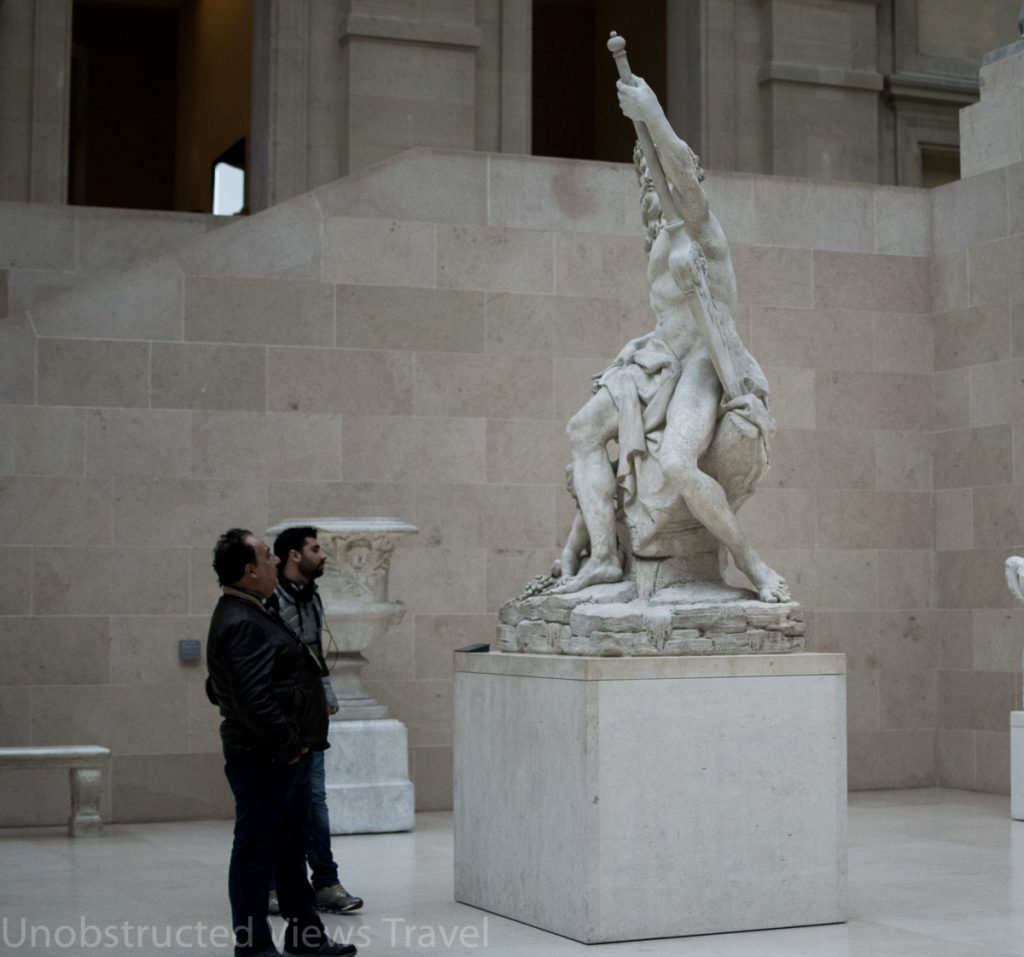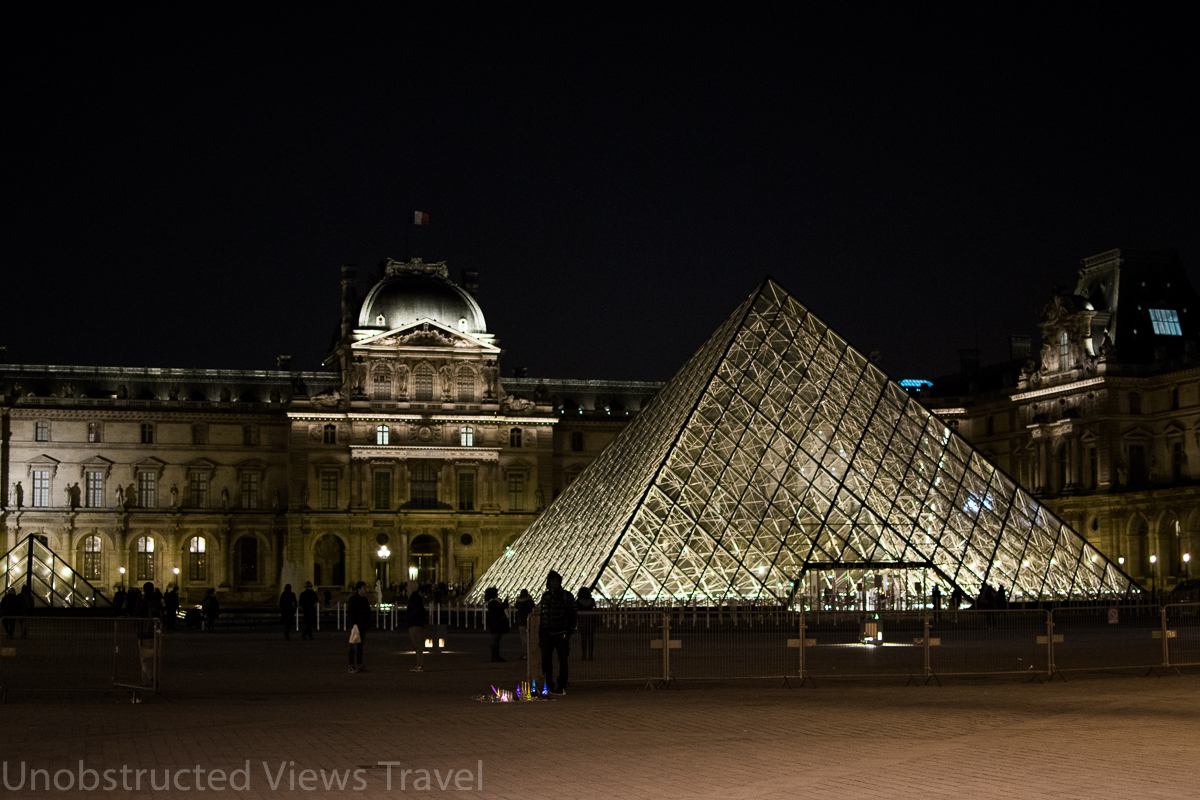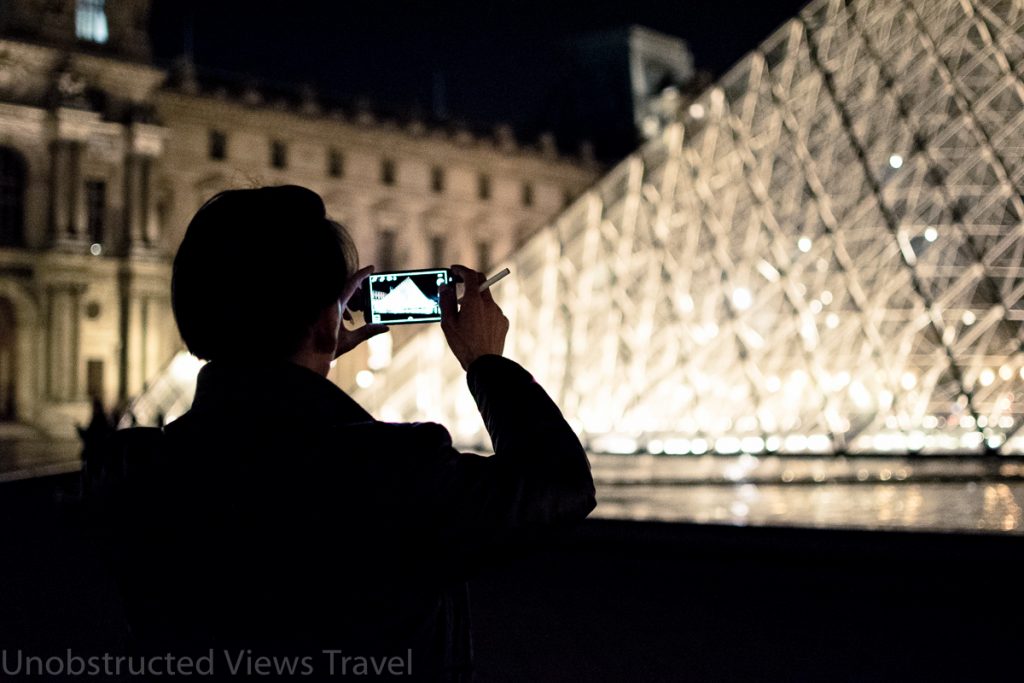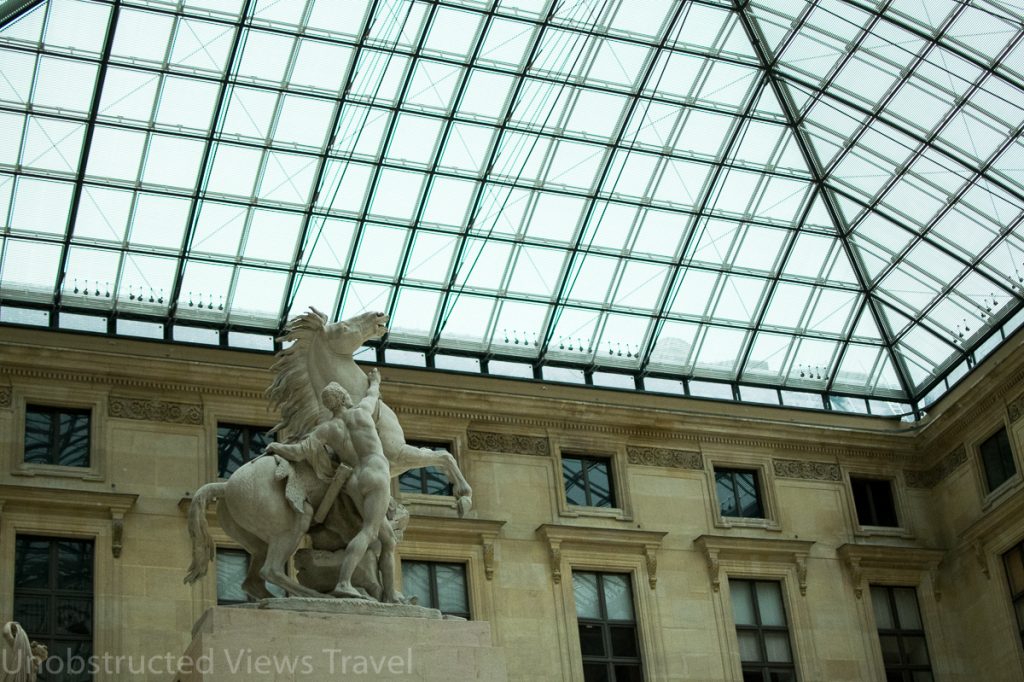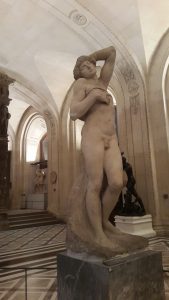With its modern glass pyramids, historical building, and extensive collection of art and artifacts, the Louvre is one of the busiest places in Paris, year-round. Most of its visitors are foreign tourists.
The museum is enormous. I mean, it’s really, really big. You couldn’t see everything in the Louvre even if you spent a hundred days in it. On top of that, a true visit to the Louvre goes beyond just stepping inside the main building. There are other exhibitions in the Musée Eugène Delacroix, the courtyard itself is worth a visit and a few photos, and the Tuileries gardens are just as interesting as any museum.

Fun fact #1: The Musée du Louvre is the largest museum in the world. It has 380,000 pieces in total, many of which are on display in the galleries, which cover over 15 acres. Of the 7,500 paintings, 66% were painted by French artists.
In fact, it’s so big, that some travel guide sites recommend skipping the Louvre in favor of smaller museums that you’d be able to see in a few hours. I’m sorry, what?! You want to skip the largest museum in the world (and one of the most beautiful) because it’s too big and has too much to see? I don’t think so. You don’t skip Hawaii because there are too many beautiful beaches to relax on. You don’t skip Italy because there are too many good restaurants to eat at. You don’t skip the Louvre because there is too much beautiful art.
Okay, I admit that it can be overwhelming. If you do it wrong, you’re likely to run into long lines, big crowds, and cranky kids. But, those are all easy to avoid. Once you know how to plan your visit, it will be one of the most rewarding things you do in Paris.
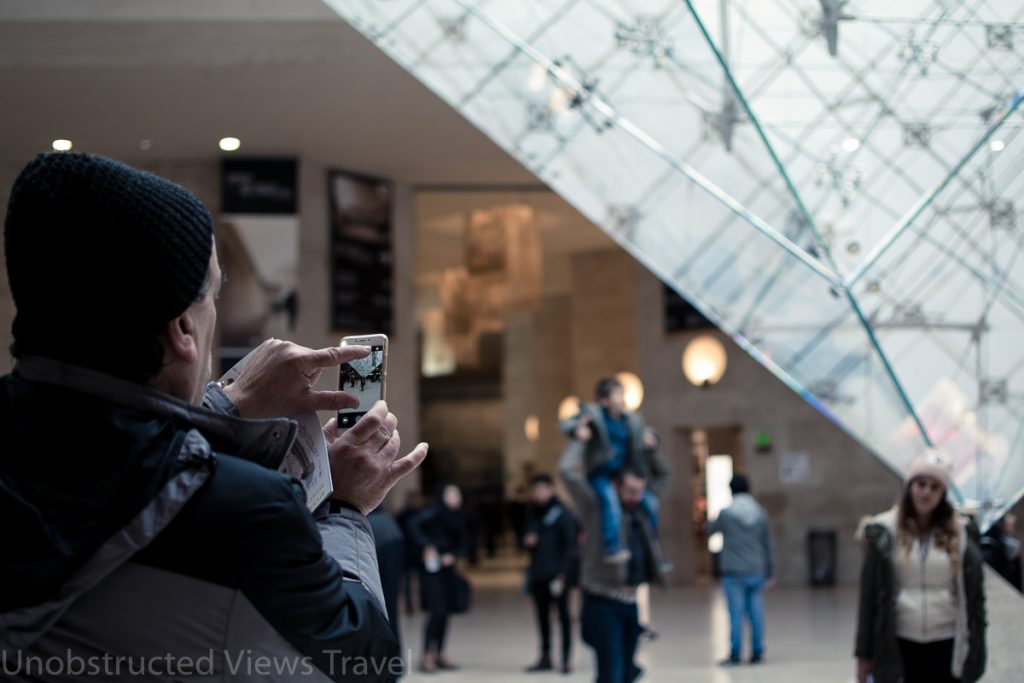
1. Plan your visit in advance
First, do some research and pick out your top three to five things that you want to see. Not seven, not ten, not a group of galleries, three to five pieces. Trust me. Pick more than that and you’ll run out of time, because you’ll get distracted by other things, and you’ll probably get lost (in a good way). Check out this section of the Louvre website for selected works organized by theme. If you’re interested in famous masterpieces, Napoleon, smiles, time, food, mirrors, or even things that are blue, there’s a list of suggested pieces for you.
Some of my recommendations: the Code of Hammurabi (ancient artifact), Eugène Delacroix’s Liberty leading the people (painting), Winged Victory of Samothrace (statue), Venus de Milo (statue), the mummies in the Ancient Egypt section (embalmed dead people), and the Wedding at Cana (painting).

2. The Mona Lisa should NOT be first on your list
“But!” I can hear you saying, “Isn’t the Mona Lisa one of the most important paintings in the Louvre?” Yes. Yes it is. But actually getting a good view of it takes a bit of careful planning. The painting is small (barely bigger than a normal piece of paper), and the crowds around it are huge. There are always tour groups. If you try to visit it mid-morning or during the day, you’re going to wait for a bit, squeeze past some people to the front, and finally get a brief look at it before being pushed out of the way by a tour guide shouting in a language you don’t understand to people from a country you’ve never been to. It’s all fine and good if you just wanted to check it off the bucket list, but there’s a better way. The lovely and mysterious Mona Lisa deserves to be properly admired and contemplated.
Instead, plan your visit to the Louvre in the evening. Check the closing times on the days you want to be there, and show up a few hours before it closes. See everything else on your list first. Then, go see the Wedding Feast at Cana. It’s on the wall opposite the Mona Lisa, and is one of the biggest and most impressive pieces of art in the museum (or in any museum, for that matter). Then wait for the crowd on the other side of the room to start dissipating. Once it does, take some time to appreciate Da Vinci’s masterpiece in relative peace until the guards kick you out.
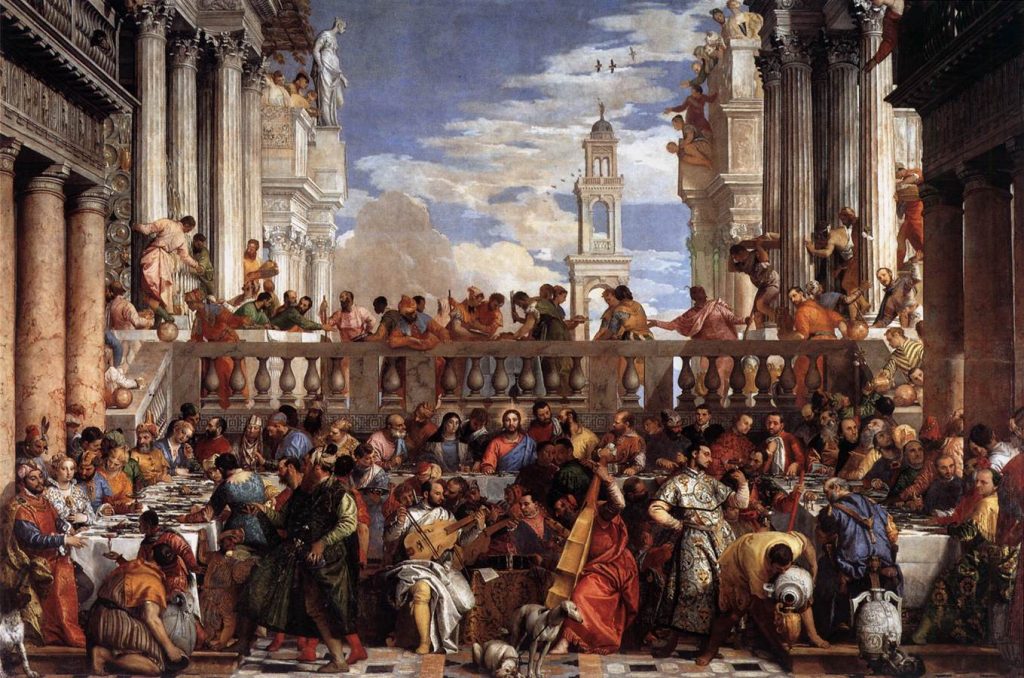
Fun fact #2: Napoleon discovered the Wedding Feast at Cana while he was in Italy and wanted to claim it for France. It was too big to be transported, so he had it cut in half, brought in pieces to Paris, and sewn back together.
3. There’s some serious art here, but you don’t have to be serious
Make it fun! Museums have sort of a reputation as being stuffy and boring. Sometimes you feel like if you go in one, you have to understand all the historical context, hold off on making jokes about the naked people in the art, or pretend to be more well-read and cultured than you really are. Well, forget all of that! You’re at a museum to become more cultured; it doesn’t mean you have to act like you already are. And you’re in France to have fun and see something new. So enjoy yourself!
When I visited Italy with my family a few years ago, my sisters, my dad and I made up a game. We took bets, before going in the museum, on how many naked statues there would be. Paintings and partial nudity didn’t count. Then we tallied them up as we went through, and whoever was closest to the actual number won. So what if we counted Michelangelo’s David as part of our naked statue tally? We still took the time to appreciate the artist’s genius and talent. We still read the plaques and learned a lot from the museum, but it made the whole experience more sociable and enjoyable (albeit a little silly).
Last time I visited the Louvre, we played a game called “caption the statue,” starting with this guy, who is totally taking a selfie:
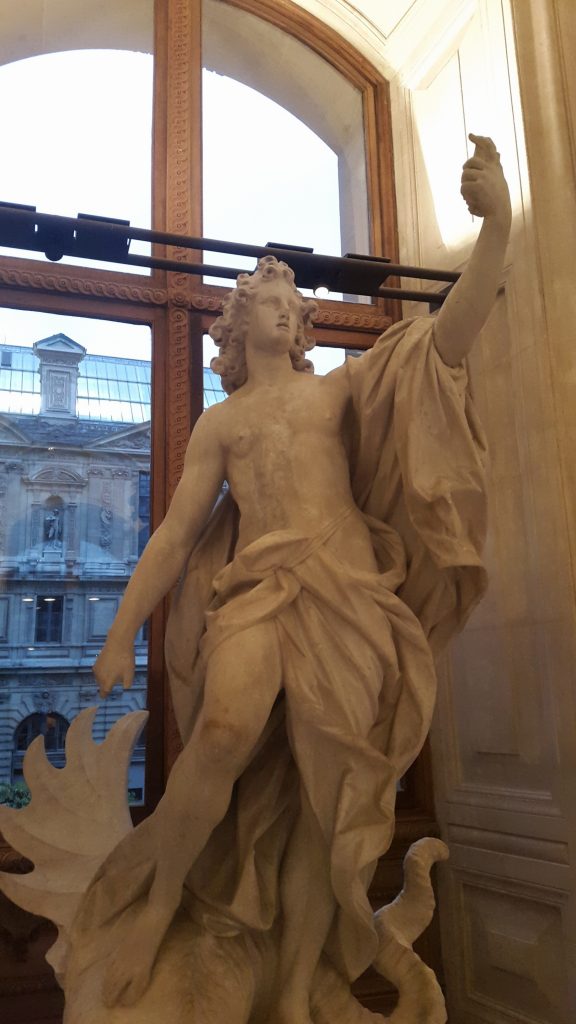
And this guy:
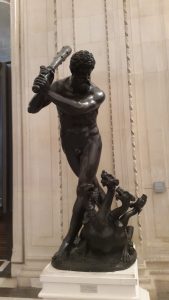
Here are some others. What would you caption these?
4. Give yourself the freedom to wander
You’ve picked your top 5 pieces. Look on the maps to figure out which wings of the Louvre hold which of the pieces you want to see. If you used the selected works guide I mentioned earlier, it should have told you what section each piece was in. Otherwise, search for it here or ask at the information desk when you get there.
If you just want to see one thing in a certain section, like the Code of Hammurabi in Near Eastern Antiquities, give yourself at least 40 minutes. You’ll spend 10-15 on the planned artifact, but on the way in and out you’ll see other interesting things. You don’t want to say “I can’t look at that really cool ancient statue because I only have time for the Code of Hammurabi and nothing else.” Look at the cool ancient statue. Take a selfie with a sarcophagus. Take a detour. Get lost in the art for a few minutes. Learn something new.
On Sunday afternoon, I went to sit in the sculpture garden (cour Marly) to read. On my way out, I noticed a sign for the “Petite Galerie.” I stepped in and it turned out to be a really neat temporary exhibition all about movement in art. It demonstrated techniques that 2-D and 3-D artists use to give the impression of movement in stationary images. It also talked about movement in living art, including, of course, dance. I thought it was incredibly interesting and I was glad I’d taken the time to be curious and see something unexpected.
Fun fact #3: The Louvre wasn’t always a museum. At first it was a fortress. Later, during World War II, it was used by the Nazis as a storeroom for stolen art.
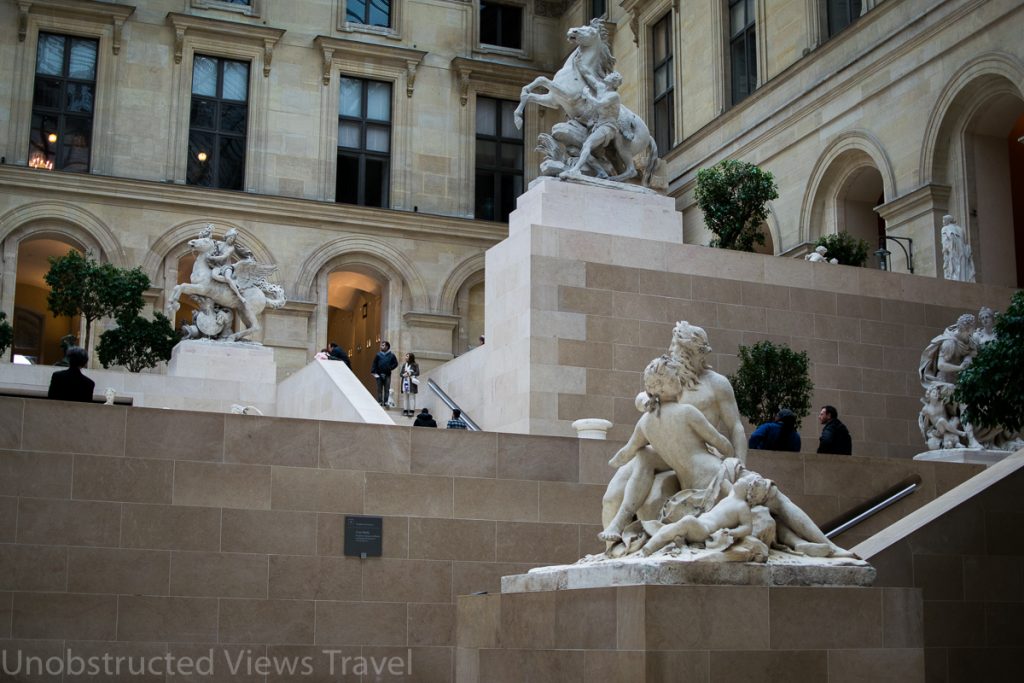
5. Be open to something new
The Louvre is famous for its French paintings and collection of ancient statues, but there is so much more to explore.
On one of my visits, I spent the day wandering the Islamic art section, and it was beautiful! I learned about the beginnings and spread of Islam, and about the expansion of the Arab world and conquest of the middle east and the Iberian peninsula. There were some absolutely stunning mosaics, beautiful artifacts and textiles from even before the 9th century, and plenty of interactive displays. I read some ancient legends and stories, and learned about the role of language in the development of culture. One of my favorite things was a video that showed what happened in Islam leadership after Mohammed died. I had just read After the Prophet by Lesley Hazleton, so the story was familiar and I enjoyed seeing the historical painted images of the important characters.
On another visit, I walked down through the lowest level where you can see parts of the original wall that was built in the 13th century. You can still walk around the bottom part of the large cylindrical donjon (dungeon), which is all that remains. It used to be the base of a tower. If I saw this during my first visit to Paris, I don’t remember. This time, though, I noticed and appreciated it because we had learned about it in a French civilization class last year at my university.
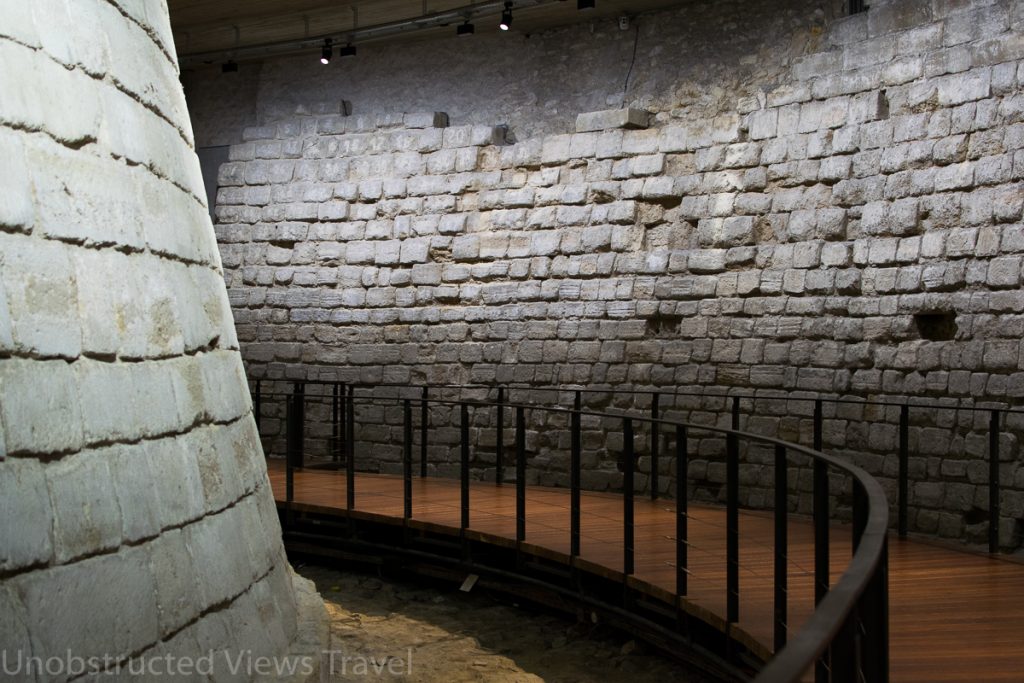
Another bonus to exploring the less famous parts of the museum is that there are hardly any tour groups to compete with. I actually had the medieval donjon all to myself for a fair amount of time, even though it was mid-afternoon. If you are lucky enough to find yourself alone in a gallery in the Louvre, you’re guaranteed a peaceful, pleasant experience.
If you have the free time, consider using the Louvre as a place to sit and read, meditate or do homework if you have any. Thousands of people visit the Louvre each day, but it’s so big that it’s not hard to find a quiet place to sit undisturbed. It’s got great soft and natural light for reading, and plenty of benches and places to sit if you go to the right galleries. Besides, being surrounded by so many of the great masters’ works is bound to give you inspiration, and the building itself is gorgeous.
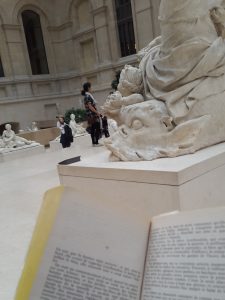
Some final tips
First, come prepared. Buying water or snacks in any of the museum cafés will cost you dearly. Even a normal-sized bottle of plain water at the food court McDonalds will set you back nearly 4 euros. Instead, bring a refillable bottle of your own. You can take the water into the museum, and you can even refill it while you’re in there. The tap water is perfectly safe to drink. Plus, not buying plastic water bottles means less unnecessary consumption and less to carry around until you find a recycling bin for plastic. Eating is not allowed in the galleries, but you can have a quick snack out in the entrance area under the large pyramid.
Leave your heavy bags in the coatroom. The lockers are free! They don’t advertise them, but they are publicly available. Underneath the big pyramid, look for signs that say “coatroom” or “vestiaires.” You just walk in, find an empty locker, and choose a code that you’ll use to lock it and open it back up when you’re done. Your feet, back and shoulders will thank you.
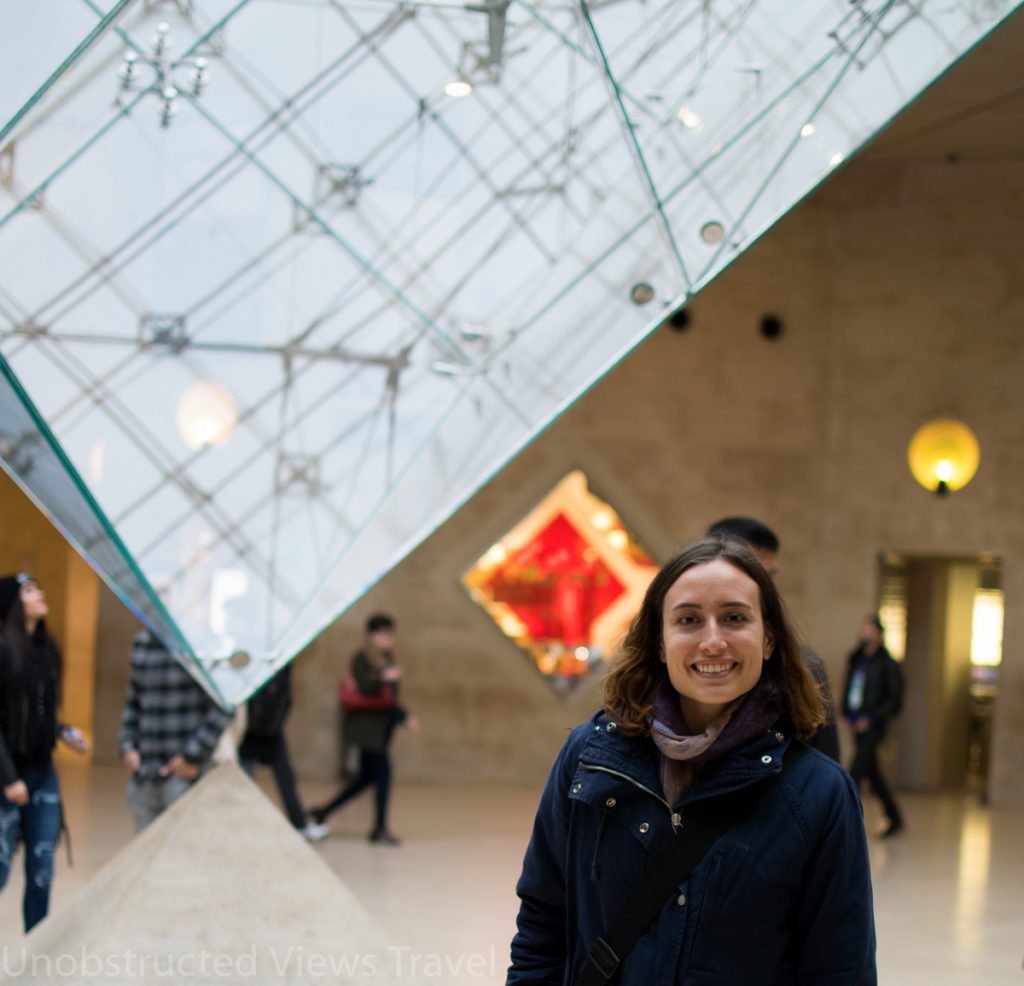
There is more than one entrance to the Louvre. Usually, the lines aren’t too bad, but if you go on a free day or during peak tourist season, there might be a sizable crowd waiting to enter through the glass pyramid in the center of the courtyard. If that’s the case, try entering through one of these other entrances:
- Galerie du Carrousel: Enter near the inverted pyramid underground. Entrances to the Galerie are found near the Tuileries end of the courtyard and from the Palais Royal – Musée du Louvre metro station (exit: Carrousel du Louvre). The lines through security might be kind of long here, too, if it’s a really busy day, but you’d be waiting inside instead of out in the elements.
- Porte des Lions: With your back to the pyramid (facing the Tuileries gardens), cross the street, go under the arch, and turn to the left. It’s the first set of lions by an arched doorway. This one usually has the shortest lines, but the most inconsistent opening hours. If it’s open, it’s probably your best bet on one of the free admission days.
- Passage Richelieu: For people with a Louvre member pass including Amis du Louvre, which I’ve described under “Practical information” below. It’s in the above ground passage between the Palais Royal metro station and the pyramid.
- Also note that if you printed advanced tickets or if you have a membership card, you can enter through the pyramid in the courtyard without waiting in line. It’s the most direct entrance. This is probably your best option for peak tourist season visits if you remember to buy tickets in advance. I honestly don’t know why more people don’t do this.
You can rent walking sticks, folding chairs, strollers, baby carriers and wheelchairs for free. Look for the “visitor assistance area” underneath the pyramid and be prepared to give them a form of ID in exchange.
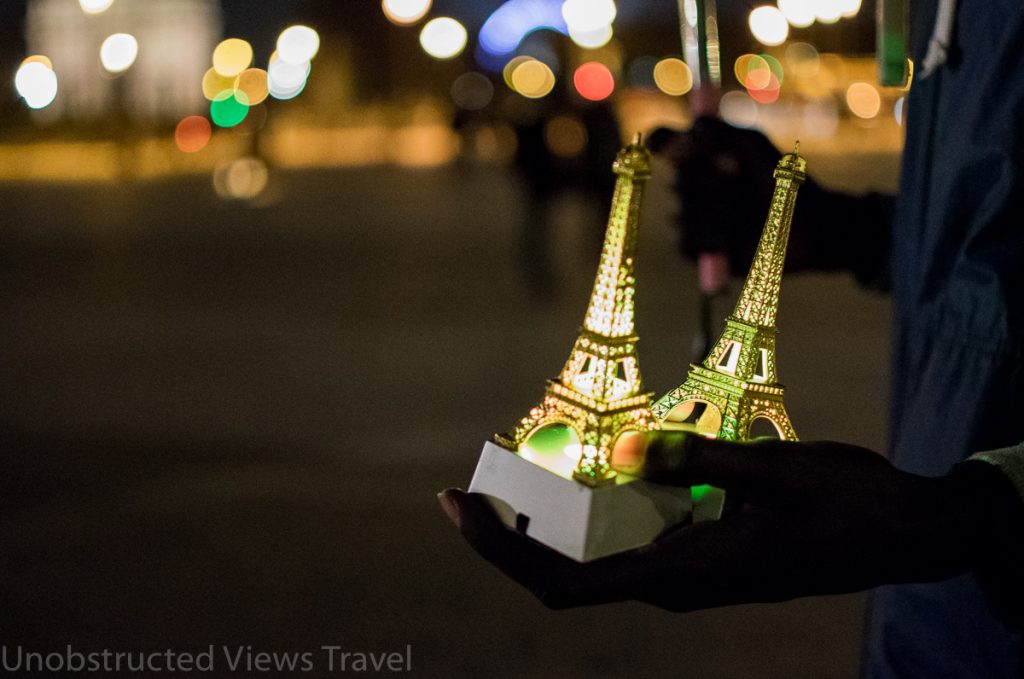
Practical information
Getting to the Louvre:
Take the metro to the station Palais Royal-Musée du Louvre (lines 1 and 7). If you’re coming by bus or other mode of transportation, click here for more detailed arrival information.
Hours:
The Louvre is open every day from 9 to 6, except Tuesday. They stay open later (until 9:45) on Wednesday and Friday.
Admission:
Free on the first Sunday of the month from October to March. Free for visitors under 18. Free for those 18 to 25 who are residents of the European Union. Free on July 14 (Bastille day). Free on Fridays after 6 pm for anyone under 26, regardless of nationality. There are some other conditions that could get you free admission; check their website for details.
Regular ticket: 15 euros.
Amis du Louvre:
For young people staying in France longer than a few days, and if you plan on visiting the Louvre multiple times and do not qualify for free admission, I’d recommend getting the Amis du Louvre membership card. If you’re under 26 it’s 15 euros for the membership (two for 28), and if you’re between 26-29, it’s 35 euros for the membership (two for 60). Get it with a friend and save money. Because I planned to visit the Louvre often, and because I knew I would be traveling often on Friday nights and the first Sunday when it would be free, I went ahead and got one. Just with one visit, I’d already gotten my money’s worth out of it, since it was the same price as a normal ticket.
To get one, you just have to go to the Amis du Louvre office. It’s in the entrance to the Louvre, under the grand pyramid, in the same area as the information desks, the coatroom and the entrances to the exhibition halls. Just walk in and tell them you want a card and they’ll get one for you. It doesn’t take long and they print it right there.
Have you ever visited the Louvre? Tell me about your experience!
